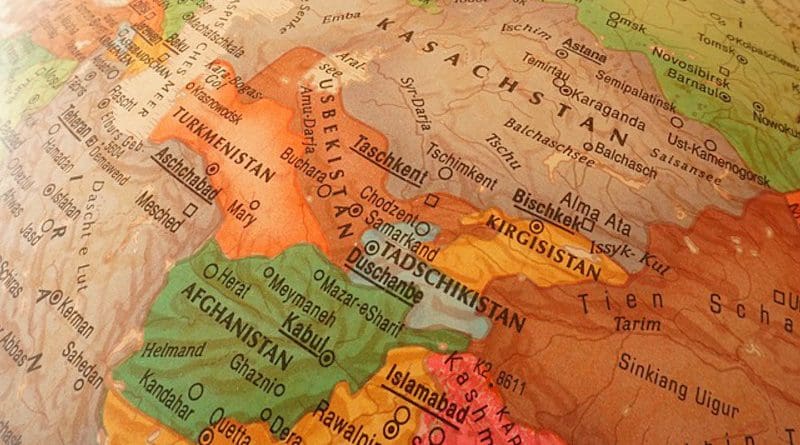Ukraine War Advancing Central Asia Development – OpEd
By Patial RC
The Russia–Ukraine War and Western sanctions on Russia has seen a sudden rise in connecting Central Asia to China and Russia because of the disruption in international trade and transport routes caused by the conflict. Even Iran has seen a sudden rise in its importance as a transit and transport hub connecting China and Central Asia to Europe and also to Russia.
Central Asia is geo-strategically significant for Russia as the region borders Afghanistan and Iran to the South, China to the East, and the Caspian Sea to the West. The Central Asian region is considered Russia’s sphere of influence, and Moscow is also the region’s security provider. Furthermore, Central Asian economies are heavily dependent on Russia.
Moving shipping containers from China through Russia to the European Union in the past few years had become a vital part of Beijing’s Belt and Road Initiative (BRI) success story, but Moscow’s invasion of Ukraine and the Western sanctions that followed have forced China to search for alternatives.
In the Socratic dialogue ‘Republic’, Plato famously wrote: “Our need will be the real creator” which over the ages has developed into a well-known English proverb; ‘Necessity is the mother of invention’ meaning that the primary driving force for most new inventions is a Need and hence Central Asian Republics (CAR),Iran, China and India have been exploring new routes for the past decade but now the Russia–Ukraine conflict has acted as a catalyst to expedite the earlier projects through the CAR where the connectivity to the rest of the world was neglected due to difficult terrain and other political and strategic reasons. These projects to co connect CAR will be a big boost to the region which will further connect to West Asia, Europe and Russia.
China’s BRI has started focusing on new Eurasian Trade Routes due to the Ukraine War faced with the economic fallout of trade disruptions. Chinese are looking further south to move rail-cargo across Central Asia and Turkey to Europe despite long-standing logistical problems with the route. China may instead be looking to diversify and build up as many alternative lines as possible in the aftermath of the war in Ukraine.
Middle Corridor of the BRI driven by China
The main alternative of the Chinese is likely to be the Middle Corridor of the BRI which is roughly 6,500-kilometer network of roads, railroads, and ports stretching across Kazakhstan, the Caspian Sea, Azerbaijan, Georgia, Turkey, and into Europe also known as the Trans-Caspian International Transport Route (TITR).The route has received large Chinese investments over the last decade but received a smaller share of shipments as a result of the Russian trains which brought goods directly to Europe by rail from China. But the situation is largely changing due to the Ukraine War and TITR trade will reverse the trade of the Russian trains(the earlier BRI success story) from China with Russia being a major loser for the future. “Both Turkey and China see an opportunity in Central Asia after Moscow’s Ukraine Invasion.”
China-Pakistan Economic Corridor (CPEC)
The China-Pakistan Economic Corridor (CPEC) is also the part of this BRI, their flagship program. CPEC is a $62 billion package of projects ranging from transportation, energy, port construction, industrial cooperation, and even social sector development. It has been estimated that besides creating two million new employment opportunities, Pakistan would benefit with at least two percent increase in its GDP per annum, and develop a wider regional connectivity further to Afghanistan and Central Asia.
India, Iran to activate new shorter corridor to Russia
India-Iran has activated a shorter route between Russia and India through which the Central Asia countries will also benefit. Iran’s state-run shipping company has successfully completed the first transit of Russian goods to India using the International North-South Transportation Corridor (INSTC).Most countries touched by the INSTC route have never been active backers of unilateral sanctions announced periodically by the West. Touching on the importance of the INSTC, Russian President Putin recently said “Moscow would pay more attention to it as it could help make the Caspian basin the hub of energy and logistics”.
A test cargo of wooden laminate sheets left St Petersburg for the Russian port of Astrakhan and from there; it was shipped to Iran’s Anzali Caspian port. It was then taken by road across Iran to Bandar Abbas from where the cargo was shipped to Mumbai. The entire journey took 24 days and is likely to become quicker once the trans-Iranian railway is completed. Traditionally, shipments from South Asia go via the Suez Canal to the ports of Rotterdam (The Netherlands), Antwerp (Belgium), Piraeus (Greece) and Valencia (Spain). All of these places are amenable to the West’s diktat on unilateral sanctions.
The Russia-Ukraine War has changed earlier equations. Russia, China, India, Iran along with many other countries in Asia, the Middle East, Africa and are navigating for alternatives. A large number of new transport corridors are now being developed and opened to traffic in Central Asia. With this China is extending its influence to CAR and the near future may replace Russian influence and dependency ultimately through their economic power.
Advantages will also accrue to the countries en-route. These corridors are going to attract the interest of a growing number of countries. If these corridors are to succeed in the long term with physical connectivity between Europe and Asia member countries especially will have to consider and involve a new set of partner countries. If these corridors are successful it will be a big economic changer for the CARs and West Asian countries given the advantages.

